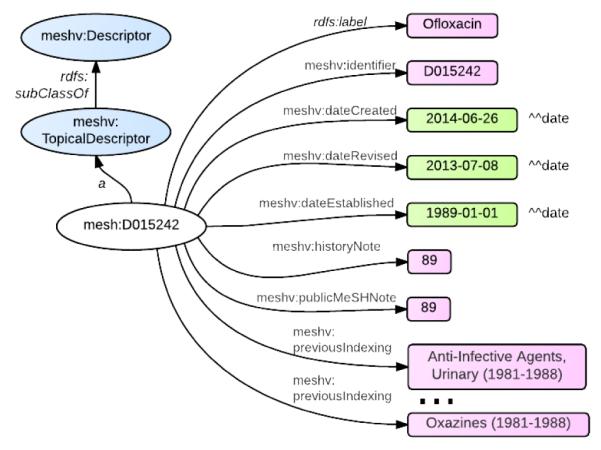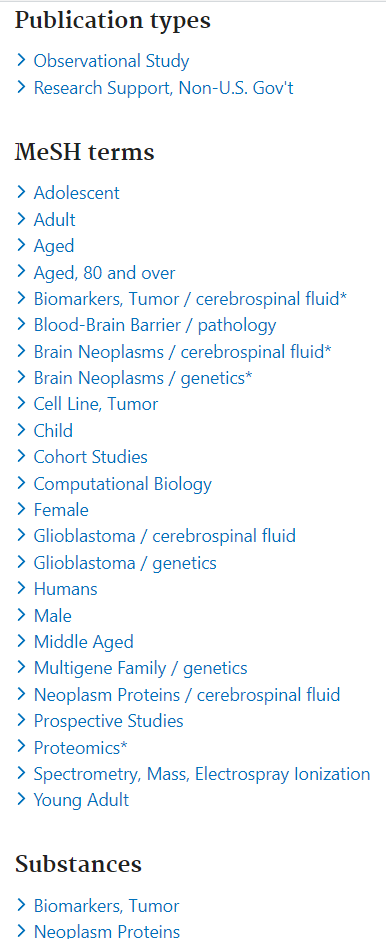Introduction
The Medical Subject Headings or MeSH is a vocabulary system of biomedical metadata in English. It is based on the indexing of life science articles and is produced by the National Library of Medicine (NLM). MeSH includes subject descriptors that appear in MEDLINE and PubMed, allowing articles to be searched according to concepts organized in a hierarchy.
Initially, MeSH was used for indexing journal article citations, but its evolution has allowed the unification of the vocabulary of the life sciences domain, and to allow, on certains websites, a more specific bibliographic search. Today, it is a globally recognized vocabulary, which is also used to catalog different types of resources.
In order to keep up with the latest research, specialists in any field are continually updating the MeSH database, adding new concepts and making changes to existing ones.
History & MeSH Description
MeSH appeared in 1954 as the Subject Authority List, and was based on the Current List of Medical Literature, which was based on the Library’s Index-Catalogue. It was in 1960, after the arrival of Index Medicus that this ontology was revised, making it possible to facilitate the use of this vocabulary and to unify it around the field of life sciences (1).
The MeSH is organized around a tree structure, starting from 19 general descriptors (e.g. anatomy, diseases, chemicals and drugs) to more precise descriptors. A concept (or descriptor) can therefore be found in one or more “branches” if necessary. Thus, a descriptor is identified by a number of trees, corresponding to its hierarchy in the MeSH tree, but also by a MeSH ID, corresponding to a unique identifier (2) (See Figure 1).

There are 3 types of MeSH records: descriptors, qualifiers and supplementary concepts records. Descriptors include topical descriptors (indicating subject/topic), publication characteristics (indicating genre or format) and geographic descriptors (indicating geographic locations). Descriptors always contain a MeSH heading (preferred term), a tree number (classification in the MeSH hierarchy), a unique MeSH ID and a date of introduction. In term of information they contain, among other things, annotations, notes (public note, history note), entry versioning, entry terms (synonyms and alternative forms), etc… (Figure 2).

Qualifiers are lower-cased and are used in combination with descriptors to refine searches or indexes on more specific topics.
Supplementary concepts records are created for chemicals, drugs and even other concepts, are generally lower-cased and more information can be obtained about them via the use of the MeSH browser.
MeSH Use
MeSH is used for online searching, article indexing and cataloguing.
Using MeSH for Online Research
The Mesh vocabulary can be used to perform topic-based searches of data in search systems such as PubMed. It is possible, especially on PubMed, to combine searches of multiple terms to search for complex topics, (for example: the role of regulatory T cells in glioblastoma).
Inclusive search and MeSH tree

When searching, if a MeSH concept has other subordinate concepts in its tree, then they are included in the PubMed query. It is also possible to restrict the search to the main MeSH and/or not to include the subordinate MeSH concepts by selecting these parameters when building the query (Figure 3).
Search using subheadings
It is possible to use the different subheadings to refine the framework of the citation search, as for example Liver/Drug effect (liver as a concept, drug effect as a subheading) allows to search for information, not on liver in general, but on the effects of drugs on liver.
MeSH indexing concept search via iterative citation search
During preliminary research on a topic, it is possible that not all MeSH descriptors used for citation indexing are known. It is therefore possible to identify a list of MeSH descriptors used in the indexing of citations of interest to the research and to use this list to build a query that will allow other relevant citations to be found (Figure 4).

Figure 4: MeSH search on PubMed via citation indexing for Schmid D. et al 2021 (4).
Using the MeSH Browser to Search for Relevant MeSH Terms
If you are not familiar with MeSH vocabulary, you can use the MeSH Browser (5) to familiarize yourself with it. It allows to find the appropriate MeSH terms, starting from a textual search or by navigating in the MeSH tree. It is also possible, if the search is for a particular drug, to find out its pharmacological actions.
Use of Entry Terms
Entry terms are considered synonyms, alternative terms and closely related to the original MeSH. They can be found on the MeSH record of a term, and allow citations to be found more easily, without knowing the exact MeSH term.
Citation indexing
The MeSH vocabulary was originally designed to index citations of literature articles in the MEDLINE database and to be able to search them on PubMed. Initially manually indexed, the database is since 2022 automatically indexed via the medical text indexing algorithm MTIA. The indexing of articles uses several parameters such as the frequency of a term in the title and in the abstract of an article, but also in similar articles of PubMed, other coded rules and sometimes, machine learning.
Use of MeSH for Cataloging
Cataloging and Metadata Management Section (CaMMs) of the NLM also uses MeSH for subject assignment in all formats. They use the same principles as for indexing with a few exceptions. They use the MARC code which allows them to use the MeSH vocabulary and its hierarchy to define domains. They must also define MeSH covering at least 20% of the work catalogued, with the number of MeSH terms rarely exceeding seven (6).
References
- https://en.wikipedia.org/wiki/Medical_Subject_Headings
- https://www.nlm.nih.gov/mesh/meshhome.html
- Bushman, B., Anderson, D., Fu, G. Transforming the medical subject headings into linked data: creating the authorized version of MeSH in RDF. J Libr Metadata. 15(3–4): 157–176 (2015). doi:10.1080/19386389.2015.1099967
- Schmid, D., Warnken, U., Latzer, P., Hoffmann, D.C., Roth, J., Kutschmann, S., Jaschonek, H. et al. Diagnostic biomarkers from proteomic characterization of cerebrospinal fluid in patients with brain malignancies. J Neurochem. Jul;158(2):522-538 (2021). doi: 10.1111/jnc.15350
- https://meshb.nlm.nih.gov/search
- https://www.nlm.nih.gov/tsd/cataloging/trainingcourses/mesh/index.html



